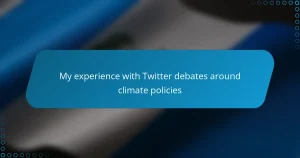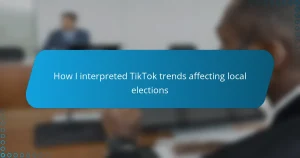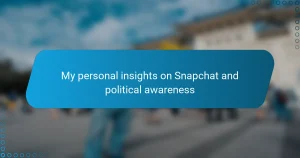Key takeaways
- Misinformation spreads rapidly on social media, creating echo chambers that reinforce existing beliefs and complicating public discourse.
- Facebook’s algorithms prioritize emotionally engaging content, often amplifying false narratives and hindering fact-checking efforts.
- Emotional manipulation through misinformation affects public perceptions and behaviors, exacerbating political polarization.
- Practical steps to combat misinformation include verifying information before sharing, diversifying online feeds, and engaging in community fact-checking efforts.
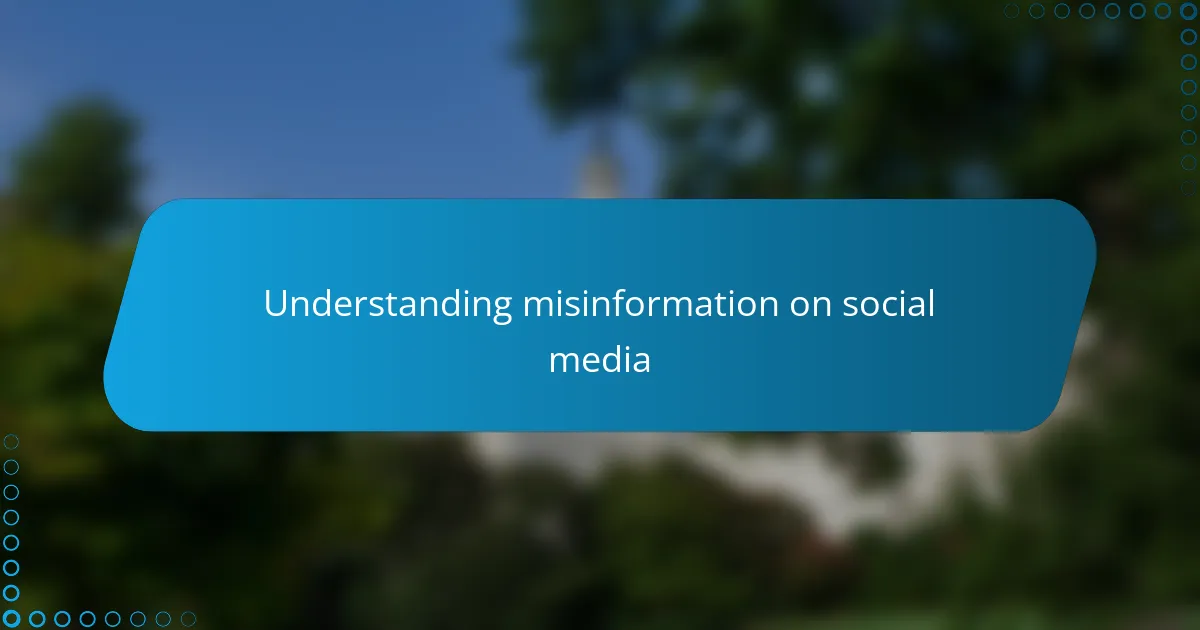
Understanding misinformation on social media
Misinformation on social media spreads like wildfire, often faster than facts can keep up. I’ve witnessed firsthand how a single misleading post can spark confusion, fear, and even anger within minutes. It makes me wonder: how many opinions are truly our own when the content we consume is so heavily manipulated?
What’s striking to me is how these platforms create echo chambers, where people only see information that reinforces their existing beliefs. This isn’t just a tech flaw; it’s a psychological trap. Have you ever found yourself stuck in that loop, questioning what’s real and what’s not?
Understanding misinformation means recognizing the subtle ways it permeates our feeds—through sensational headlines, doctored images, or even seemingly harmless rumors. I’ve learned that awareness is the first step toward breaking free from this cycle and thinking critically about what we scroll past every day.
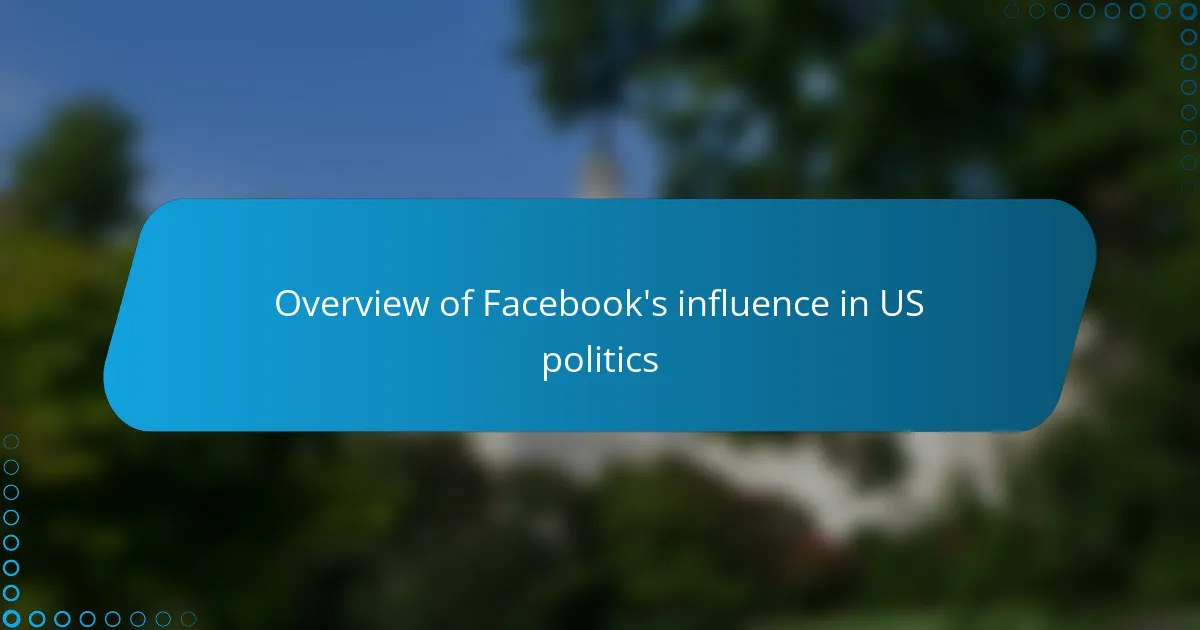
Overview of Facebook’s influence in US politics
Facebook’s role in shaping US politics has been nothing short of transformative, but not always in ways that are easy to watch. From personal experience, I’ve seen how quickly misinformation can spiral within my own network, turning casual debates into heated arguments rooted in falsehoods. This platform’s vast reach means that even the smallest piece of misleading content can gain traction and influence public opinion.
What struck me most during my investigation was how Facebook’s algorithms often promote content that sparks strong emotional reactions, regardless of its accuracy. This creates a fertile ground for misinformation to thrive, complicating the political landscape in ways that can feel overwhelming.
- Facebook’s algorithms prioritize engaging content, often amplifying sensational or misleading posts
- Political campaigns and foreign actors have exploited the platform for targeted misinformation
- The rapid spread of false information can affect voter perceptions and behavior
- Efforts to fact-check or moderate content have faced significant challenges and backlash
- The platform’s influence extends beyond elections, shaping public discourse on key political issues
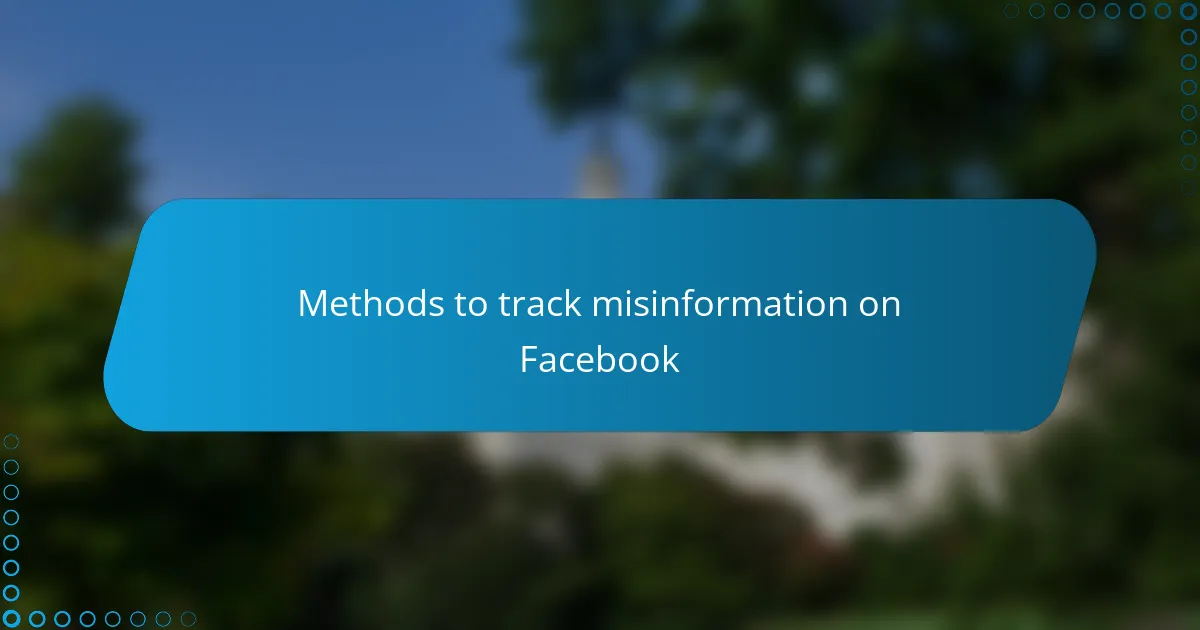
Methods to track misinformation on Facebook
Tracking misinformation on Facebook isn’t as simple as just scrolling through my feed and flagging odd posts. I’ve dived into tools like CrowdTangle, a Facebook-owned platform that lets me see which posts are trending across pages and groups. It’s fascinating—and a bit unsettling—to realize how certain pieces of false content gain momentum, often before fact-checkers can even catch up.
I also relied heavily on keyword monitoring and sentiment analysis. By setting alerts for politically charged terms and tracking how the language around them shifts, I could witness the subtle ways misinformation morphs. Have you noticed how similar stories reappear with just a slight twist? That’s no accident—it’s a strategy to bypass automated checks.
Perhaps most revealing was engaging directly with Facebook groups where misinformation often seeds itself. Joining these spaces gave me a frontline view of how false narratives build trust and then spread like wildfire. It made me question: how much of what’s shared in my own circle has roots in carefully planted untruths?
![]()
Tools and techniques I used for tracking
When I first dove into tracking Facebook’s role in spreading misinformation, I quickly realized that relying on intuition alone wouldn’t cut it. I had to get systematic and gather concrete data. Using a mix of digital tools allowed me to identify patterns and trace the flow of false narratives in real time, which was both eye-opening and, honestly, a bit overwhelming.
From my experience, combining automated tools with manual cross-checking gave me the clearest picture. It wasn’t just about numbers—it was about understanding the emotional weight behind each post and how it resonated within specific communities. Here’s what I found most effective:
- CrowdTangle: Vital for monitoring the spread of viral content across Facebook pages and groups.
- Fact-Checking Databases: Platforms like Snopes and PolitiFact helped me verify claims linked to popular posts.
- Graph API Explorations: Allowed me to collect public data for deeper pattern analysis.
- Manual Content Analysis: Spending hours reading posts helped me detect subtle misinformation tactics that tools missed.
- Network Mapping Software: Tools like Gephi visualized connections between pages sharing similar misleading stories.
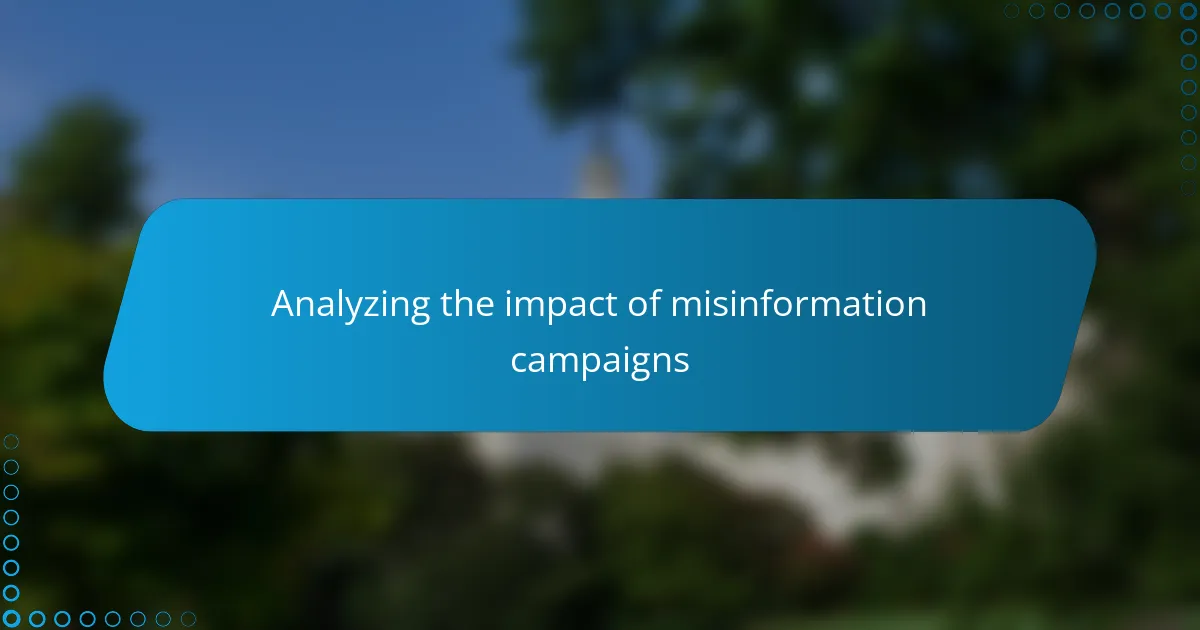
Analyzing the impact of misinformation campaigns
Analyzing the impact of misinformation campaigns made me realize just how deeply they erode trust within communities. I’ve seen discussions I care about devolve into confusion because false stories push people further apart rather than bringing any clarity. It makes me question: when so much of what we read is manipulated, how can we ever feel confident in our shared reality?
What stands out to me is how misinformation doesn’t just distort facts—it shapes emotions, often in ways that motivate action or silence critical thinking. In tracking Facebook posts, I noticed that emotional triggers like fear or outrage are the fuel that keeps these campaigns alive and spreading. This emotional manipulation is subtle but powerful, and ignoring it means missing a huge part of the problem.
From my experience, the real damage lies in how misinformation campaigns influence not just individual opinions but entire political behaviors. I watched how false narratives altered voter perceptions, sometimes shifting public discourse on key issues without anyone fully realizing it. Have you ever wondered why certain political events suddenly feel more polarized? I believe misinformation is a big reason why.
![]()
Lessons learned from tracking Facebook misinformation
Tracking Facebook’s role in misinformation has been a revealing journey for me. I was struck by how quickly false narratives can spread and the subtle ways the platform’s algorithms can amplify them. It felt frustrating and urgent, especially knowing how these falsehoods shape public opinion and political discourse.
What really stood out were the patterns in how misinformation exploited emotional triggers, specifically fear and outrage. Watching this unfold over time gave me a deeper understanding of why some stories gain traction regardless of their truthfulness. Here are the key lessons I took away from this experience:
- Misinformation thrives on emotionally charged content that bypasses critical thinking.
- Facebook’s algorithm tends to prioritize engagement over accuracy, inadvertently boosting false claims.
- Users’ echo chambers reinforce existing biases, making misinformation harder to dispel.
- Fact-checking efforts, while important, often arrive too late to stop viral spread.
- Transparency from the platform is crucial but often insufficient to counteract misinformation’s reach.
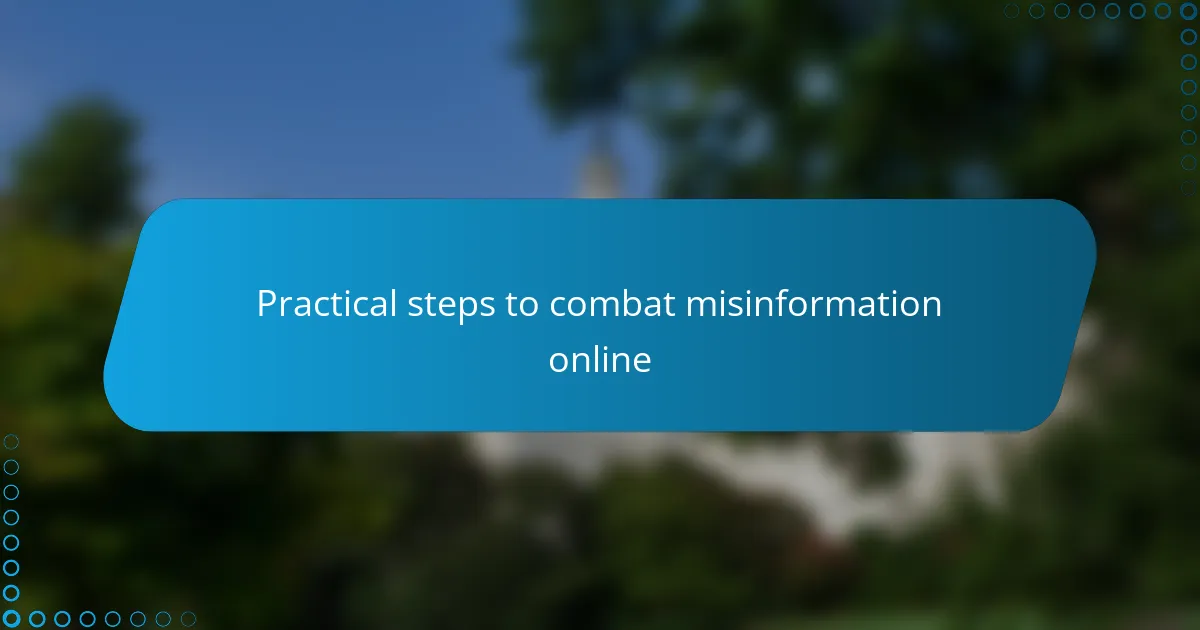
Practical steps to combat misinformation online
Combating misinformation online starts with a simple but powerful habit: pause before you share. I’ve caught myself rushing to repost something alarming, only to later realize it was misleading. Taking a moment to verify information from multiple trusted sources can break the rapid-fire cycle of falsehoods spreading unchecked.
Another practical step is actively diversifying your feed. If you, like me, mostly follow voices that align with your views, you’re unknowingly building an echo chamber. I’ve learned that intentionally following credible sources across the political spectrum not only broadens perspective but also makes misleading content easier to spot.
Finally, getting involved in community efforts to flag and report misinformation can make a real difference. It’s easy to feel powerless against the flood of false content, but I’ve found that engaging with fact-checking groups or using Facebook’s reporting tools helps slow the tide. After all, when many of us act together, the impact compounds. Have you tried this approach before? From my experience, it’s empowering to know you’re part of the solution.
